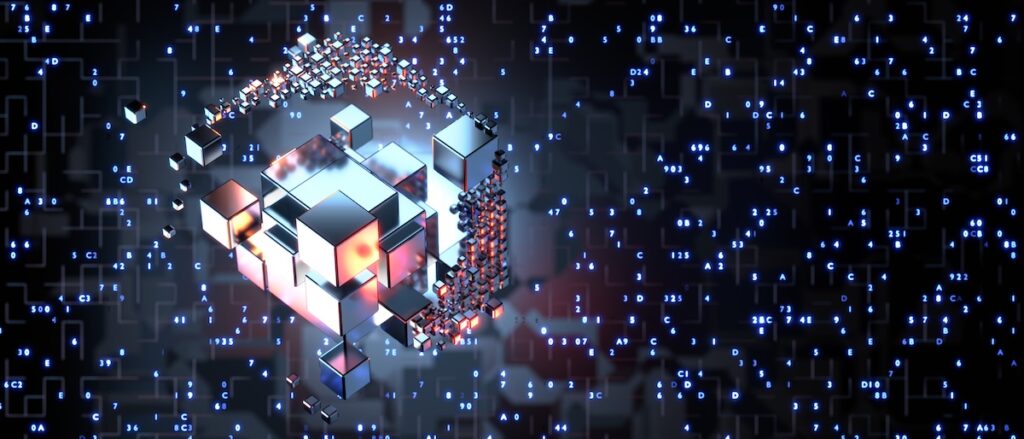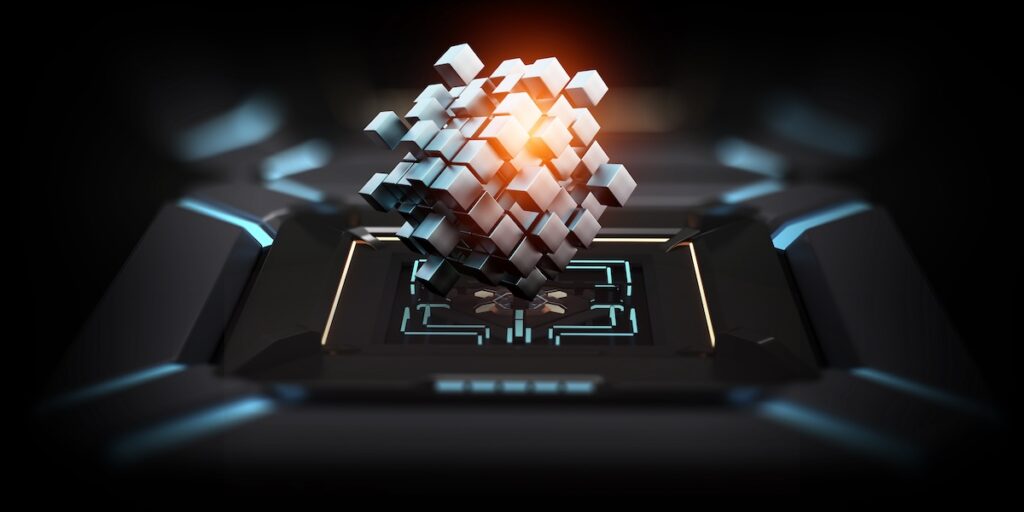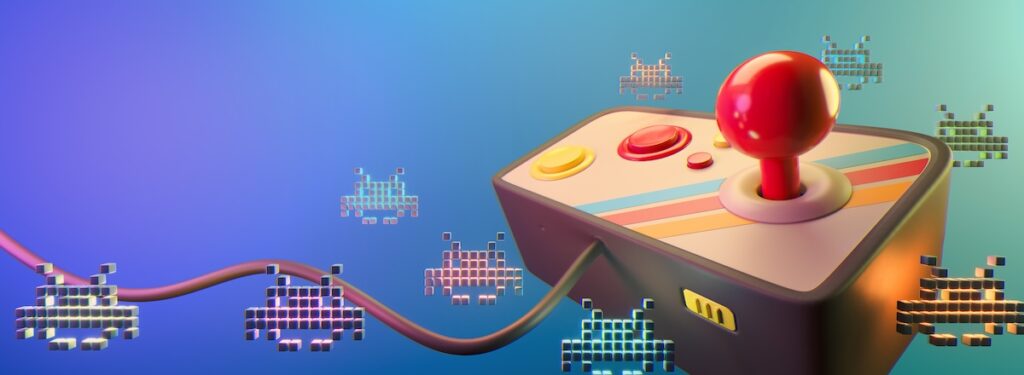Curious about the gaming blockchains that currently rule the roost? Discover the best gaming blockchains, with platforms such as Polygon Network, Immutable X, and the Ronin Network. Learn how these blockchains support both speed and low fees, along with scalability, ensuring that developers and players get the best solution possible.
Key Takeaways
- The leading gaming blockchains are Polygon Network, Immutable X, and Ronin Network.
- Top requirements for the best gaming blockchains: high throughput, low latency, low transaction cost, and secure transfers of in-game assets.
- New promising contenders such as Avalanche Subnets, NEAR Protocol, and Oasys—featuring advanced customization, infinite scalability, and regulatory compliance—strong players in the blockchain gaming ecosystem.
Leading Gaming Blockchains
The top gaming blockchains have set themselves apart from the competition, not only with outstanding user performance in areas of transactions, low costs, and high scalability but also to ensure that game developers and players have an optimized and efficient playing experience. Most notably, however, are the Polygon Network, Immutable X, and Ronin Network, each with their peculiar strength in what they do best: a strong blockchain gaming ecosystem.
Polygon Network
Polygon Network attracts game developers because it simplifies the technical complexities that go into creating gameplay scenarios with relative ease. It overcomes the critical issue of high fees and large throughput, meaning smooth experiences for developers and gamers alike. The enormous developer backing and large user base will make it one equivalent key player in the space of blockchain gaming. With more games moving to Polygon, developers now can benefit from scalability and speed in order to build fast-paced game experiences. Polygon ensures :
- Low transaction costs
- High throughput
- Fluid gameplay
- No performance bottlenecks
- No steep fees
This makes Polygon a preferred choice for many looking to develop or play blockchain games.
Immutable X
Immutable X has certainly positioned itself as one of the biggest developers in the blockchain gaming ecosystem, growing its zkEVM-enabled blockchain—something good for overall health—as it’s getting insane growth in activity and user engagement. With over four million active accounts, Immutable X hosts popular projects like:
There are many games, with sports games included, that utilize the features of the network to provide enjoyable gaming experiences. Hunters on-chain is likely the most popular on-chain game of Immutable X, with around 60,000 active wallets. This just underlines that the network really can support games with strong in-game engagement, thus making sure it positions itself as one of the leading blockchains for the developers of games and players alike. The success of Immutable X has proven infrastructure strength and also proven that zkEVM technology has the potential to bring value to the gaming ecosystem.
Ronin Network
The next major player in the blockchain gaming world is the Ronin Network. Among its popular games are Apeiron, Wild Forest, and Pixels; it has remained a destination for creating exciting, cutting-edge blockchain games. Recently, when Pixels transferred to Ronin, the interest that the game was able to generate doubled, which further proved that the network can increase user experience.
A big part of what makes the Ronin Network so strong is the leadership shown by Sky Mavis. Prioritizing network security and user engagement, Ronin has developed an active, engaged ecosystem attractive to developers and players alike. The capability of the network to facilitate the support of high-quality games with an easy, smooth, and secure way to transact places it high among the offerings in the blockchain gaming space.

Key Features of Top Gaming Blockchains
The leading gaming blockchains come with special features that differentiate them from others, making them more suitable for the application of gaming. Features of the:
- High-throughput and low-latency systems.
- Inclusion of play-to-earn mechanics.
- The sure transfer of in-game assets.
Let’s look more closely at those characteristics.
Scalability and Speed
Through high transaction speeds demanded for such experiences, seamless gaming is achievable—demands met by blockchain games with the adoption of advanced technologies, including sidechains and sharding, which boost scalability. Examples of such platforms include Polygon and Immutable X. It is on Layer-2 solutions that faster and cheaper transactions that address scalability challenges are provided. These technologies enable games to handle real-time interactions and high volumes of gameplay without compromising performance.
Further to this, NEAR Protocol shows the possibility for scalability brought about by sharding technology. Simple Nightshade sharding allows NEAR to process thousands of transactions a second with minimal latency, which ensures decentralized applications are able to support millions of users simultaneously. This will allow games with complex mechanisms and high user traffic to function smoothly, offering a super gaming experience.
Low Transaction Costs
To retain players and ensure the economic viability of microtransactions in blockchain games, it is vital to minimize transaction costs. High transaction fees can deter players, especially in games with frequent transactions.
Layer-2 solutions play a pivotal role in reducing these costs by alleviating congestion on the main blockchain, making it feasible for developers to incorporate economically viable microtransactions.
Security and Trust
With security and trust being of utmost importance in blockchain gaming, the use of various cryptographic techniques and the immutable nature of blockchain ledgers serve to bolster these elements. This ensures transparency and reduces the risk of fraud in transactions, which is crucial for player confidence. By protecting player data and digital assets from online attacks, blockchain technology significantly elevates the security of gaming ecosystems.
The use of NFTs in blockchain gaming offers several benefits:
- True ownership of digital assets, allowing players to securely trade tokenized items across platforms
- Bolsters the legitimacy of in-game asset investments
- Enhances the overall gaming experience
- Platforms like Immutable X’s zkEVM technology exemplify high-level security for developers, making blockchain gaming a safer and more trustworthy environment for all participants.

Emerging Contenders in Blockchain Gaming
While the leading blockchains have set high standards, emerging contenders like Avalanche Subnets, NEAR Protocol, and Oasys are making waves with their unique features and innovative approaches. These platforms offer flexibility, scalability, and regulatory compliance, positioning them as strong competitors in the blockchain gaming ecosystem.
Avalanche Subnets
Avalanche Subnets provide game developers with the ability to create independent chains tailored to specific needs, enhancing customization and stability. This flexibility allows for the creation of dedicated blockchains for various gaming projects, fostering a unique ecosystem for different gaming hubs. Notable games like Shrapnel and DeFi Kingdoms showcase the potential of Avalanche Subnets in delivering high-performance and interoperable gaming experiences.
The appeal of Avalanche as a gaming platform is further highlighted by its successful games, which have attracted a dedicated player base and demonstrated the platform’s capabilities. This makes Avalanche Subnets a compelling choice for developers looking to innovate and push the boundaries of blockchain gaming.
NEAR Protocol
NEAR Protocol’s use of sharding ensures infinite scalability, making it an ideal platform for supporting complex games with large user bases. Its dynamic resharding mechanism allows the network to adapt its capacity based on usage without requiring changes from validators, providing a seamless and scalable environment for game development.
Oasys
Oasys aims at having a blockchain gaming platform that is legally sound, in compliance with the requirements of jurisdictions around the world. This view towards compliance is an important strategy in navigating the complex landscape of blockchain gaming and affects token classification, taxation, and general legal compliance. A legally sound infrastructure will attract developers who would like to work within a compliant framework. Partnerships with gaming giants like Ubisoft and Sega also boost the appeal of Oasys. Ubisoft is developing Champions Tactics, and Sega is working on Sangokushi Taisen: Battle of Three Kingdoms, indicating Oasys’s potential to cooperate with the titans in the industry to bring the experience of quality games.
Popular Game Genres on Blockchain
Blockchain technology has given birth to various popular game genres such as RPGs, strategy games, and trading card games. These two genres leverage the unique capabilities of blockchain in order to offer different user experiences and play-to-earn mechanics, thus enriching the whole game ecosystem with these emerging innovations.
RPG and Strategy Games
These games fall under the categories of role-playing and strategy, once powered by blockchain, that facilitate real ownership for in-game assets, thereby allowing players to partake in web3 gaming. The core advantages they receive go as follows:
- Trade such assets with real cash, which is also possible through game tokens.
- Turn in-game items into NFTs and tokens
- Enable peer-to-peer trading
- Incorporate play-to-earn mechanics
It is these very genres that give players engaging and rewarding experiences, making them some of their favorite games. Players can customize their own characters, level their abilities, do some quests, or just fight in different decentralized virtual worlds. These strategy games push the player to use their tactical thinking and resource management through strategic decision-making in most cases, with the economy based on blockchain.
MMORPGs
MMORPGs on blockchain offer players true ownership of in-game items, enhancing engagement and economic opportunities. Games like Decentraland and The Sandbox allow players to own and trade virtual assets, leveraging NFTs to create unique in-game items that can be securely traded on blockchain marketplaces.
Trading Card Games
Trading card games on blockchain enable players to:
- Collect, trade, and own digital cards with verifiable uniqueness and scarcity
- Ensure ownership authenticity and scarcity through the integration of NFTs, with each card representing a unique digital asset
- Securely trade their digital cards on blockchain marketplaces
- Determine the value of these cards based on their rarity and limited availability
The blockchain-based trading card games market is thriving, with players engaging in battles and trading on a global scale. This genre has successfully integrated blockchain technology to provide a dynamic and interactive gaming experience.

Challenges in Blockchain Gaming
Still, a major stumbling block to blockchain gaming continues to be technical issues, in particular that of scalability, the costs of transactions, and the programming of smart contracts. Scalability problems might affect the execution speed of massive games, hence further damaging the player experience. Therefore, network congestion affects the reliability of transaction processing and influences the trust toward the system. Such problems can be overcome by game mechanics optimization: lessening on-chain transactions ensures smooth and more predictable gameplay.
Adoption Barriers
The major challenge or deterrent in blockchain gaming is the adoption barriers. Most gamers do not understand much about blockchain technology and cryptocurrency, hence it becomes a bit tough when they are introduced to the system. This discourages them from adapting to blockchain-based games, limiting the number of active users. Overcoming these barriers requires educational initiatives and user-friendly interfaces.
Quality of Games
The current lack of quality games is one major challenge facing the blockchain gaming ecosystem, as game enthusiasts are used to the very best when it comes to content and immersive storylines and gameplay. To be able to attract or retain players within the gaming community, developers need to focus on providing these elements to the game. This will not only enhance the experience of a player but will also bridge the gap between traditional and blockchain gaming.
Future Trends in Blockchain Gaming
A look into the future presents several trends that are ready to define the trajectory of blockchain gaming. These are in terms of:
- Cross-chain interoperability, enabling seamless transfer of digital assets across multiple blockchain networks
- Enhanced player experiences through hybrid game models
- Increased developer support with advanced tools and programs
All these trends will initiate innovative growth in the blockchain gaming arena.
Cross-Chain Interoperability
Cross-chain interoperability is making it easier to transfer NFTs and other digital assets across different blockchain networks, empowering a multi-chain ecosystem in gaming. This makes game assets and data movable across blockchains. For instance, services like Chainlink CCIP offer the following:
- The security and reliability that developers need to confidently build secure cross-chain games
- A seamless experience in asset and data transfer between chains
- Enhanced player experience in gaming; it unlocks a richer experience deeply linked to cross-chain interoperability, supporting blockchain specialization where different blockchains have various functions of a game based on their strengths.
It will provide a seamless liquidity experience across all chains, paving the way for cross-chain NFT marketplaces and a more liquid and interoperable gaming experience. This will not only improve transaction processing speeds but also make liquidity seamless between blockchains, allowing for the very first time cross-chain NFT marketplaces and an even more liquid and interoperable gaming experience.
Enhanced Player Experience
The future blockchain games are going to work on hybrid models with elements that include play-to-earn mechanics, traditional gaming, subscription models, and freemium structures. The integration of these factors can contribute to player engagement. This feature guarantees transparency in blockchain, especially through smart contracts, where all parties can act with confidence that the outcome is enforced; this creates fair play and reliable enforcement of game rules.
Increased Developer Support
With blockchain gaming going mainstream, developers need more support than ever. AvaCloud and Stardust Game Toolkit, for example, vastly reduce the complexity of subnet deployment and integration, making it much easier for the developer to build and launch blockchain games. Programs such as Arcad3 and Avalanche Multiverse give technical and financial support to Web2 game companies to transit into Web3 development; new doors open to many new dimensions of game creation. These resources are going to help developers wade through the complexities of blockchain technology and fully harness its potential. The more such ecosystems can offer comprehensive support, the more developers will join it, and the better the game variety and quality will be.
Summary
The landscape of blockchain gaming is exciting and changing rapidly. Blockchain networks, like Polygon Network, Immutable X, and Ronin Network, with gaming at the front, provide sub-second transactions with small fees and large scalability, making them perfect for developers and gamers. Emerging contenders include Avalanche Subnets, NEAR Protocol, and Oasys with unique features and solutions that are making significant strides. New industry development in things like cross-chain interoperability, better player experience, and more support for developers shows the way. As we continue learning more about blockchain technology’s potential for gaming, the possibilities for innovating and growing have no limits.
Editor’s note: This article was written with the assistance of AI. Edited and fact-checked by Owen Skelton.
Cross-chain interoperability simplifies the transfer of NFTs and digital assets across blockchains, enhancing player experiences and enabling a multi-chain ecosystem.
Immutable X enables engaging blockchain games and hosts popular projects such as Gods Unchained and Hunters on the BoomBox chain, creating robust infrastructure for these kinds of games—leading to building and sustaining the development of immersive gaming experiences.
Primary problems of the blockchain gaming sphere include technical challenges, adoption barriers, and a deficit of high-quality games. The most important issues are those related to scalability, transaction costs, lack of knowledge regarding blockchain technology, and game quality.
The future of blockchain gaming will be about cross-chain interoperability, hybrid gaming models, and more developer support for tools and programs. Such developments are likely to positively impact the course of the industry.
Polygon Network is a leading choice in blockchain gaming because it makes all the technical stuff easy, solves transaction fee issues, and has many users. These could make it an attractive option for both game developers and players.







Leave a Reply